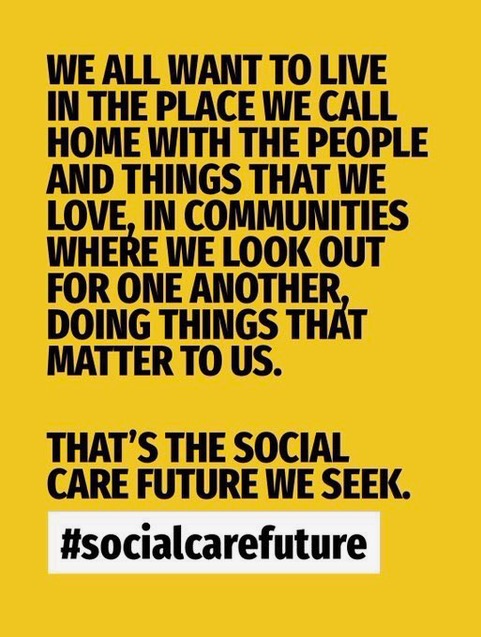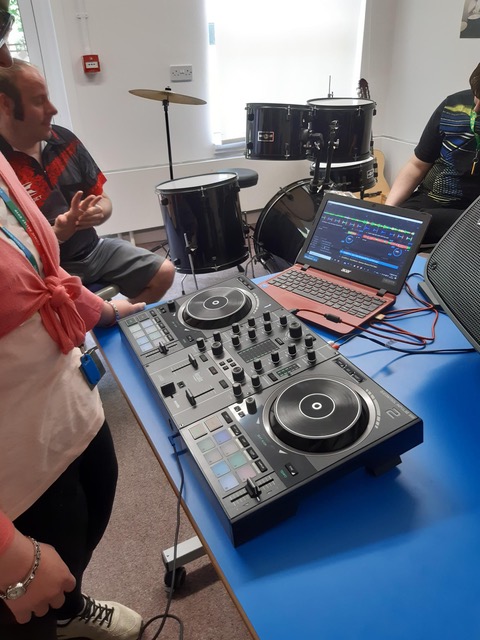Written by Martin Routledge, TLAP and In Control

A couple of weeks ago I stood up at a Community Circles event in Stockport to talk to people about Circles of Support and their short and long term benefits I strongly believe that Circles of Support are a way for us to bridge the gap between people, communities and the state. At a time when services and communities are having to find ways of doing more with less, Circles seem to me to be the answer to so many of our challenges. Circles function by bringing together a group of people who work towards agreed goals for the benefit of the person at the centre of the Circle. It could be that the person with a Circle is a family carer, someone with learning disabilities or autism, someone with dementia or someone older who feels isolated. Circles are for anyone that needs and wants that extra support – a position that we might all find ourselves in throughout our lifetime.
The concept of Circles isn’t in itself particularly ground breaking – people rallying around an individual offering support – and there are lots of fortunate people out there who will have this type of excellent support framework without the need to formalise it in anyway. But there are many who don’t. Many that need to bring people together in a facilitated way to work towards outcomes and to be consistent in their support. For these people Circles of Support can become life lines. They can reduce social isolation, build connectivity within communities, improve relationships within families, access better services and resources by sharing and drawing on the different knowledge, skills and gifts of individuals and provide people with confidence that support will be ongoing even if they are not around to push it forward.
When I list the benefits in this way it does seem puzzling that there aren’t more people benefiting from Circles of Support around the country? Well this is one of the questions addressed at the Community Circles event. Their aim is to help build on the excellent work that is talking place in pockets throughout the UK and introduce a model of Circles that could work at scale so that even more people can benefit. This will involve (a) ensuring more people hear about and have access to Circles and (b) refining the Circles model so that it is sustainable and attractive to all parties involved. So what of the sustainability of Circles? Well this is of course dependent on people and organisations getting behind the movement and pushing it forward, supporting it to be a success. For this to happen we need to be able to show the benefits, not just for the individual at the centre of the Circle and their family but for the wider community. We need to be able to demonstrate the economic impact of Circles.
In 2013 Circles of Support and their economic impact was added to a wider piece of research being undertaken by the PSSRU at LSE. The aim of the research is to look at a number of community projects and determine their ability to draw upon the resources that exist within communities, promote capacity, build connections and ultimately reduce the pressure on formal services by meeting or delaying the need for them.
The Circles research set out to collect predominantly qualitative data drawn from interviews with key people involved in a small number of Circles to identify the importance of Circles from different perspectives and understand more deeply their workings. A very small amount of quantitative data has been collected on recent service use and on Social Care Related Quality of Life outcomes for those with a Circle using the ASCOT (Adult Social Care Outcomes Tool). Ultimately the research hopes to be able to develop ‘economic pen-pictures’ of different Circles, giving preliminary indications of where the economic benefits of Circles may lie.
It is still early days for this research in regards to Circles but we were able to share some of these initial findings prepared by Margaret Perkins, Researcher at London School of Economics, with people who came to the event.
Potential economic impacts of Circles
- The avoidance of expensive residential care for the person with complex needs;
- The mental health of family carers may be improved with reduced health service use (with associated cost impacts);
- Some carers feel they have been enabled to be employed /continue to be employed because of the support the Circle provides (with returns to the Treasury) ;
- The employment of local people as personal assistants who can therefore input into the local economy (with returns to the Treasury);
- Personalised care by individually selected staff who understand the person and who can respond appropriately, reducing the possibility of ‘challenging’ behaviour arising which might lead to the need for expensive specialist care;
- Employment of the person with complex needs in some instances (with returns to the Treasury);
- Initial indications from the ASCOT suggest a gain in Social Care Related Quality of Life (but very small numbers).
The evidence that has been collected to date does seem to reinforce the many examples from people that we heard from at the Community Circles event. People who talked candidly about how Circles have supported them in a way that others could not, how they have brought services and families together, how they have given rise to expectations, strengthened relationships and empowered individuals to achieve great things.
These are exciting times and it is my hope that this type of study will help us have conversations with more people and organisations about the benefits of Circles for all parties involved.
Thank you to Margaret Perkins for providing Martin with the preliminary research data – we look forward to hearing the final outcomes.
This blog site is brought to you by Community Circles. If you want to learn more about Circles of Support from Community Circles, like us on Facebook and follow us on Twitter.






